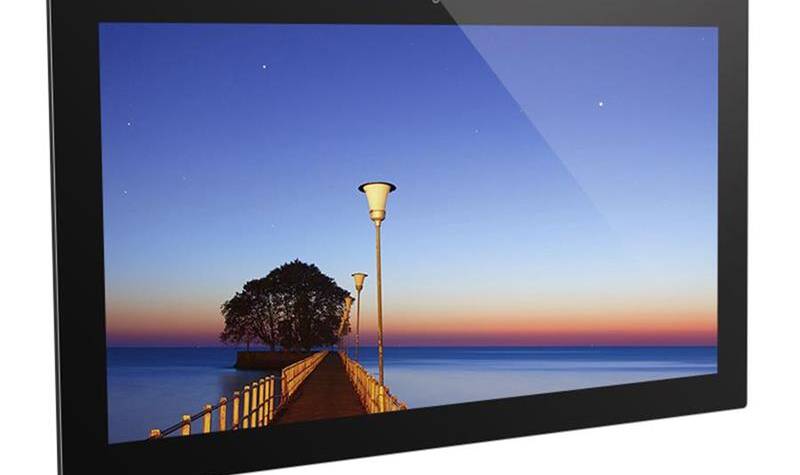
The fitness Android touch screen is revolutionizing the way individuals engage with their workouts. These devices offer intuitive interfaces that provide a seamless user experience, making it easier to track progress and access workout plans. With features that allow for personalized training sessions, they are becoming an essential tool for fitness enthusiasts.
Many users appreciate the convenience that a touch screen offers, especially in high-intensity settings. The ability to navigate apps, monitor heart rates, and even receive real-time coaching makes these devices particularly valuable. Advances in technology ensure that these screens are also durable and suitable for a variety of environments, from gyms to outdoor activities.
As fitness technology continues to evolve, the integration of touch screens into workout routines is likely to become more prevalent. This trend not only enhances user interaction but also encourages consistent engagement with fitness goals. The impact on personal fitness journeys cannot be understated, as these tools are designed to motivate and support users in a direct and effective manner.
Fundamentals of Fitness Technology
Fitness technology has transformed how individuals engage with their health and wellness. Key developments in wearable devices and touch screen interfaces play a crucial role in this evolution.
Evolution of Wearable Fitness Devices
Wearable fitness devices have significantly advanced since their introduction. Initial models primarily focused on basic functions, such as step counting and heart rate monitoring. These devices now offer comprehensive health metrics, including sleep tracking, calorie expenditure, and even stress levels.
Popular examples include smartwatches and fitness bands. Brands like Fitbit, Garmin, and Apple lead the market by integrating advanced sensors and software. These devices often sync with mobile apps to provide users with personalized insights.
Additionally, the rise of fitness trackers is enhancing user engagement. They facilitate goal-setting and motivation through community features and challenges. As technology evolves, wearables are becoming increasingly specialized, focusing on specific sports or health needs.
Understanding Touch Screen Interfaces
Touch screen technology plays a pivotal role in the usability of fitness devices. Modern interfaces allow for intuitive navigation and interaction, enhancing the user experience.
Touch screens provide quick access to features and data, making workouts more efficient. Users can easily toggle between metrics, set alarms, or adjust settings with simple gestures.
There are two main types of touch technology: resistive and capacitive. Resistive screens rely on pressure, while capacitive screens use electrical conductivity, providing a more responsive experience.
The integration of haptic feedback has improved user interaction further. It gives tactile responses when actions are taken on the screen. This feature is vital for users during workouts, allowing them to stay focused without looking down.
Incorporating Android into Fitness Regimens
Utilizing Android technology can significantly enhance fitness regimens. This integration allows for better tracking, customizable workouts, and improved user interaction through touch screens.
Synchronizing Android Devices with Fitness Apps
Many fitness apps available on Android offer seamless synchronization with devices like smartwatches, heart rate monitors, and fitness trackers. Users can easily connect through Bluetooth or Wi-Fi.
This allows for real-time tracking of essential metrics such as heart rate, calories burned, and step count. Popular apps like Google Fit, Strava, and MyFitnessPal provide comprehensive interfaces to consolidate data.
By integrating these applications, individuals can access personalized insights and goals. This data helps improve motivation and adherence to fitness plans. Regular updates ensure compatibility with new devices, maximizing user experience.
Optimizing Touch Screen Usability for Workouts
Touch screen functionality is crucial during workouts. It needs to be responsive and user-friendly, allowing quick access to features without disrupting exercise routines.
To enhance usability, many apps feature large buttons and simple navigation menus. Gesture controls, such as swipes and taps, help keep hands free during intense workouts.
Additionally, customizing screens for quick access to preferred metrics can enhance focus. For instance, displaying heart rate and elapsed time prominently can aid performance.
Choosing devices with durable screens that resist scratches and moisture can improve longevity. This tactility allows users to interact confidently during various exercises, from yoga to weightlifting.
Customizing Fitness Tracking Features
Customizability is key to personalizing fitness experiences. Many Android fitness apps allow users to tailor tracking options to better suit individual goals.
Users can adjust settings for specific activities, like running, swimming, or cycling. Depending on the app, tracking can include interval training, lap times, and personal records.
Setting reminders for hydration and nutrition can also help maintain overall health.
Integration with other health data sources, like sleep tracking, provides a holistic view of wellbeing. This approach encourages users to make informed choices and measurements while progressing towards fitness goals.
Full Stack Developer India: Expertise and Opportunities in the Tech Industry
Full stack development has emerged as a key competency in the tech industry, particularly …










